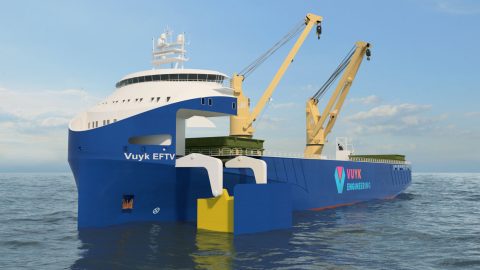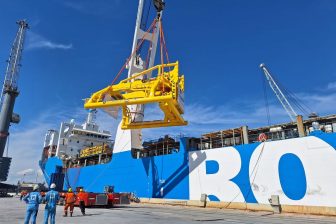
New transport vessel concept unveiled by Vuyk Engineering
Photo source: Vuyk Engineering
Maritime design and engineering company Vuyk Engineering has thrown its horse into the race to decarbonise the project cargo fleet with a new Eco-Friendly Transport Vessel (EFTV) design. Vuyk noted the design comes as a response to the demands for fuel economy and speeding up port operations.
Want to read more?
Register now to read more premium articles.




